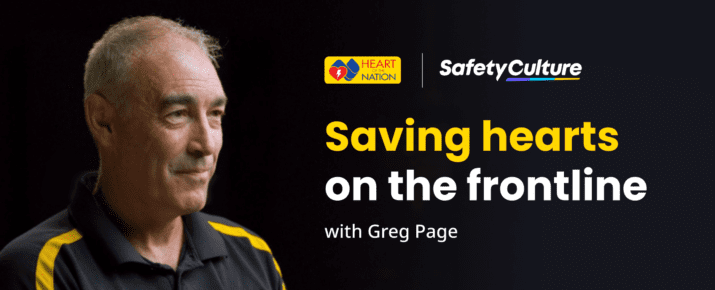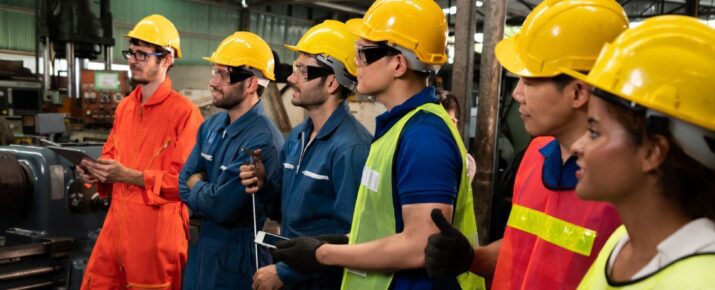Decision Making: Is Quicker Always Better?
Ask The Experts | By | 13 Dec 2021 | 4 minute read

Why are big businesses slow? James Simpson, CTO, SafetyCulture explores how to untangle your organization’s decision making.
Organizations can slow down as they grow and scale. That’s just a fact. A consequence of slowing down is that the customer sometimes doesn’t get the best products or experiences. This is not deliberate, nor is it due to some failed strategy or plan. It’s a collection of natural human tendencies that emerge in bigger groups. Something we need to be aware of is that big groups tend to make decisions more slowly.
Knowing this, we need to look at how we make decisions and a closer look into fast and slow decision making. A question that keeps coming up…
Is it better to be fast or accurate when making decisions?
I’m going for the direct approach here. For engineering in particular, within sensible parameters, speed is better than accuracy.
A decision that is 80% correct today is better than a decision that might be 90% correct next week. Of course, this will not always be the case – but most of the time speed wins. We need a workplace culture that values and promotes fast decision-making, and we need people who can keep making decisions quickly.
What factors drive slower decisions in bigger organizations?
With size comes increasing pressure, real or perceived, for decisions to be “right”. People’s reputations are enhanced more by being right instead of fast. We need to accept that making a “wrong” decision is part of moving fast. We talk about “failing fast” often enough – but to do this we need to accept the occasional “fail”. We need a culture that accepts and improves upon “wrong” decisions. This will help people make faster decisions.
What’s great about this sort of culture is it supports people to be creative and take risks. If you create the right atmosphere for fast decision-making, you’ll be encouraging (calculated) risk-taking and creative thinking. They’re all linked.
Finally, most organizations don’t talk about decision-making. They don’t stop to consider the question of speed vs accuracy. They don’t acknowledge this trade-off, so they do not develop deliberate behaviors that lead to speed.
Examples of fast and slow decision making
An example of where slow decision-making hurt a business is when Johnson & Johnson invented and sold cardiac heart stents. They revolutionized heart surgery and created a multi-billion dollar market overnight and had 90% of the market in 1996. Competitors arrived that made slightly better stents, priced lower. Rather than acting swiftly, J&J was slow making decisions on how to respond, particularly with pricing. Their culture was focused on making the best “right” decisions, not “fast” decisions. While they went back and forth, in only 6 months their competitors were able to take more than half of the market – pushing J&J aside. They’ve since exited the stent market – a market they created. If J&J were better able to make fast decisions, they may be the market leader for cardiac stents today.
An example of where fast decision-making made history goes back to the Apollo11 moon landing. During the descent to the moon’s surface, there was a computer problem – some weird error in the navigation system that no one understood. They didn’t know how serious it was (or wasn’t) – and whether it would impact the moon landing. Neil Armstrong had 30 seconds to make a decision whether to continue (and hope the computer recovered in time) or abort the mission. Contrary to how this story is often told, this was not a life or death decision. It was a “make history today” or “make history in a few months into the future with another mission” decision. That is, it was a deferral decision. We face this type of decision frequently in engineering. Obviously, he chose to proceed with the landing. Using incomplete information from ground control – it was a calculated risk. It turned out to be a good decision and history was made that day. For the record, he made that decision in about 15 seconds.
How this applies to engineering
In engineering, we make thousands of decisions a week. Code patterns and structures, technical design choices, testing approaches, prioritization of tasks and roadmap items, task allocation – the list is long. I think people would be surprised at how many decisions we make in a day. A single engineer can make hundreds of decisions in a day while working at the feature, architecture and product level. Engineering managers are constantly making decisions about scope, plans and people. It is a whirlwind of decision-making if you watch closely.
Often we don’t have all the information we may need to make a decision. As a result, we find ourselves faced with the choice – do I wait for more information to make a decision right now, or make what might be a better decision in the future? Sometimes we feel obliged to include a large number of people in a decision when it really could be made with a smaller group. In both cases, we must find the balance and try to keep decision-making speed a priority.
How fast is too fast?
In pursuing fast decisions, we need to avoid making rash or irrational choices. The logic has to be sound. We need to collect additional perspectives when it is important. We need to understand the consequences of getting it wrong and treat the decision as a calculated risk. Differentiating between fast and rash is a key skill that comes with practice and experience. The sooner in your career you think about decisions in this way, the sooner you will master the speed vs accuracy question. Watch someone who is good at it.
How can I get better at making fast decisions?
Practice. For myself, I use the 7 questions below. They aren’t perfect, but they are a good start.
- How fast am I making decisions right now?
- Can I timebox how long I take to make this decision?
- Am I letting the fear of getting it “wrong” slow me down?
- Am I trying to include too many people in a decision that adds time?
- Am I waiting for more information when I could just make a decision now?
- Is this a complex decision that can be broken down into smaller decisions?
- Do I understand the consequences of getting this decision wrong? (and are they really that bad)?
Once you start thinking about your decision-making speed, you will notice that you start to make faster decisions. Simply being aware of the fast vs accurate trade-off is a great first step to improving.
As companies grow, we need to take steps to keep the organization moving fast. Bigger groups tend to make decisions more slowly, and we can counteract this by deliberately thinking about fast vs accurate decisions. Building a culture where we value and promote making decisions quickly will help us keep the speed of a smaller organization. In turn, this will help us build better products and experiences for our customers.
Important Notice
The information contained in this article is general in nature and you should consider whether the information is appropriate to your specific needs. Legal and other matters referred to in this article are based on our interpretation of laws existing at the time and should not be relied on in place of professional advice. We are not responsible for the content of any site owned by a third party that may be linked to this article. SafetyCulture disclaims all liability (except for any liability which by law cannot be excluded) for any error, inaccuracy, or omission from the information contained in this article, any site linked to this article, and any loss or damage suffered by any person directly or indirectly through relying on this information.





